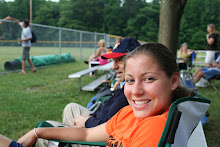He photographs Leopard seals, polar bears, narwhals, aurora borealis, walruses, birds, sea lions in the arctic for National Geographic.
He got started in 1994, while struggling to make money as a young photographer, Nicklen wrote a proposal to the Nunavut territorial government asking for funding to begin a book project documenting wildlife in the arctic and Antarctica. The government cut him a check for $8,000.
I like how he captures action scenes. For example the image of the leopard seal reaching for a bit on the penguin and almost snapping his jaws is so thrilling. His favorite places to work are places where he knows that he can protect through strong photography. He likes to work in remote places with extreme environments such as the high arctic. Such places get very little coverage and their species need protection as much as any other.
"My goal is to bridge the gap between scientific research and the public by producing stories for magazines such as National Geographic. Since 1994, I have been fortunate to see my work published in hundreds of magazines around the world. In the last few years, I have published seven stories in National Geographic Magazine: "Atlantic Salmon," July 2003, "Northern Exposure," January 2004, "Phoenix Islands," February 2004, “Where Currents Collide,” August 2006, “Deadly Beauty: Leopard Seals,” November 2006, “Life at the Edge,” June 2007, “Narwhals,” August 2007. Other stories are in the works and I will be on assignment for National Geographic for much of the next two years"
I like his use of reflections on water and snow. "Ice Chunks at floe edge" the curved lens makes the illusion of the surface of earth and the sun rising over the horizon.
He is an adventurer photographer. Online it says he has ridden on the the back of a bowhead whale. He has had a near-disastrous attack by a bull elephant seal.
To approach animals in their most natural, native settings, he has to understand they mysteries of their behavior. He takes careful preparations he can show the animal in its best light, demonstrating its beauty, strength, and intelligence. I think photographing the polar bears is helping to show people the effects of global warming and what we are doing to the animals in the arctic. I like the dramatic use of lighting in the early or late parts of the day. He also uses reflections to make the image more interesting.

No comments:
Post a Comment